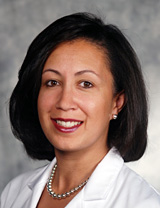Opioid Abuse Backlash Could Hurt Sickle Cell Patients’ Medication Needs, Some Fear

With drug overdoses now the leading cause of accidental death in the U.S., efforts are underway in many states to limit abuse and access to prescription opioids — steps that, some say, could cause unnecessary suffering among sickle cell disease (SCD) patients who rely on these medications to treat their symptoms.
“I’m seeing more and more patients calling me or coming in and saying they’re in so much pain and have been taken off the narcotics they have been receiving for years,” said Judy Anderson, executive director of the Sickle Cell Association in Norfolk, Virginia, an education and advocacy organization.
“They’re telling me that physicians are now recommending that patients wean themselves off the pain medications and start taking extra-strength Tylenol, which does absolutely nothing for their pain,” she said.
Sickle cell patients, doctors said in interviews with Sickle Cell Anemia News, are best advised to keep in contact and maintain relations, with their treating physicians. And, they noted, exceptions usually are made for people with chronic and serious illnesses.
About 100,000 Americans live with sickle cell disease, an inherited disorder that causes red blood cells to become hard and sticky, and look like a C, or a sickle shape. Sickle cells die earlier than healthy red blood cells, causing a constant shortage. These cells get stuck and clog the blood flow, and are unable to carry oxygen to tissues throughout the body, causing patients extreme pain and risking organ damage.
But physicians are under increasing pressure to limit prescriptions of painkillers such as OxyContin, hydrocodone, and Percocet to curb escalating levels of opioid addiction and deaths in America. States are introducing more stringent provider guidelines and targeting operations that make the drugs widely available.
President Trump has called the epidemic a “tremendous problem” and pledges to remedy it. The preliminary report of The President’s Commission on Combating Drug Addiction and the Opioid Crisis encourages, among other things, the development of non-opioid pain relievers.
According to the American Society of Addiction Medicine, 2 million U.S. residents abuse prescription painkillers, and overdose is now the nation’s leading cause of accidental death. In 2015 alone, 52,404 people died of an overdose, and 20,101 of those deaths were related to misuse of prescribed opioids.
But some experts worry the opioid crisis is unfairly stigmatizing narcotic pain relief, particularly for sickle cell patients, most of whom are minorities. Sickle cell disease occurs in about one in 365 African-American births and one in 16,300 Hispanic-American births, according to the Centers for Disease Control and Prevention.
“What this crackdown could do is enable those providers who are already biased to now legitimize it,” said Dr. Biree Andemariam, chief medical officer for the Sickle Cell Disease Association of America. “It may give unwarranted legitimacy to existing biases.”
Compounding the issue is that sickle cell patients are living longer. In the 1970s, when sickle cell was primarily a pediatric disease, patients were fortunate to reach 18. Now, most live into their 40s, and some into their 50s and 60s, Anderson said.
“Some of these doctors never saw a SCD patient,” Andemariam said. “So, there’s a learning curve. They need more education.”
Improved survival rates also can mean higher drug tolerances, necessitating higher dosages. “They’re taking medicine from the time they’re very young, and now their bodies have adapted, and they need more,” Anderson said. “But they’re being told by doctors outright that they’re drug addicts.”
Andemariam said older African-Americans are most vulnerable, and may have to work harder to navigate institutional changes. “They didn’t choose the color of their skin or SCD, but they likely will feel more of the ramifications,” she said.
In lieu of writing prescriptions, some physicians are advising patients to get care from pain management doctors, physical therapists, or psychologists, Anderson said. Others suggest alternative treatments for pain, such as ionized water.
“If patients are in a lot of pain all I can tell them is to go to emergency,” she said. “But this is what we fought against so many years ago, the lack of continuity of care. A team approach is best.”
Although the medical community has known about sickle cell disease for more than a century, few good therapies exist. In early July, the U.S. Food and Drug Administration approved Endari (L-glutamine oral powder) to reduce severe complications associated with the blood disorder, the first treatment approved for patients with SCD in 20 years.
But while the non-narcotic drug can prevent pain, it doesn’t appear to reduce it, Andemariam said.
“So we’re reliant upon opioid medicines,” she said. “We don’t have anything else to offer. Patients are at the mercy of physicians who can give them opioids when they have pain. And pain is subjective; there’s no way to measure it. So we have to believe the patient.”
But physicians are wary of state oversight. “One physician told me that he’d been cited several times for prescribing too much pain medication to sickle cell patients,” Anderson said. “They’re afraid of their licenses being pulled.”
Aiming to restrict opioid prescriptions for new patients, 16 states in the last year have enacted laws, introduced bills, or adopted rules. In Connecticut, a seven-day initial prescription limit came into effect in 2016, with exceptions for chronic pain, cancer pain or treatment, substance abuse treatment, and palliative care.
Some insurance companies have joined the effort. Anthem recently announced that it had met its goal of slashing by 30 percent the number of opioid prescriptions filled at pharmacies. The new policy does not apply to cancer or sickle cell patients, or those receiving palliative care.
Still, Andemariam said she believes that the overarching intent of the opioid crackdown is well-meaning.
“When you have a situation that’s already troubling, then you add certain legislative efforts to try to rightly gain control over this epidemic, you have populations of people who are going to get caught in the crossfire,” she said. “I don’t think anybody has gotten in a back room and said we’re going to make people suffer further.
“And, if people have established relationships with providers, they will not get caught in crossfire.”
Dr. Roy Soto, a member of the Michigan Prescription Drug and Opioid Abuse Commission, agrees. “Historically, people have been given a large amount of medicine at a time. The question is, should we?” said Soto, a professor in the department of anesthesiology at Oakland University’s School of Medicine.
“Now there are concerns that the result will be that people won’t have medicine,” he said, “but we are tackling the problem intelligently and reasonably.”
The commission is working to develop policies and an action plan to lower rates of opiate addiction and overdoses in that state.







